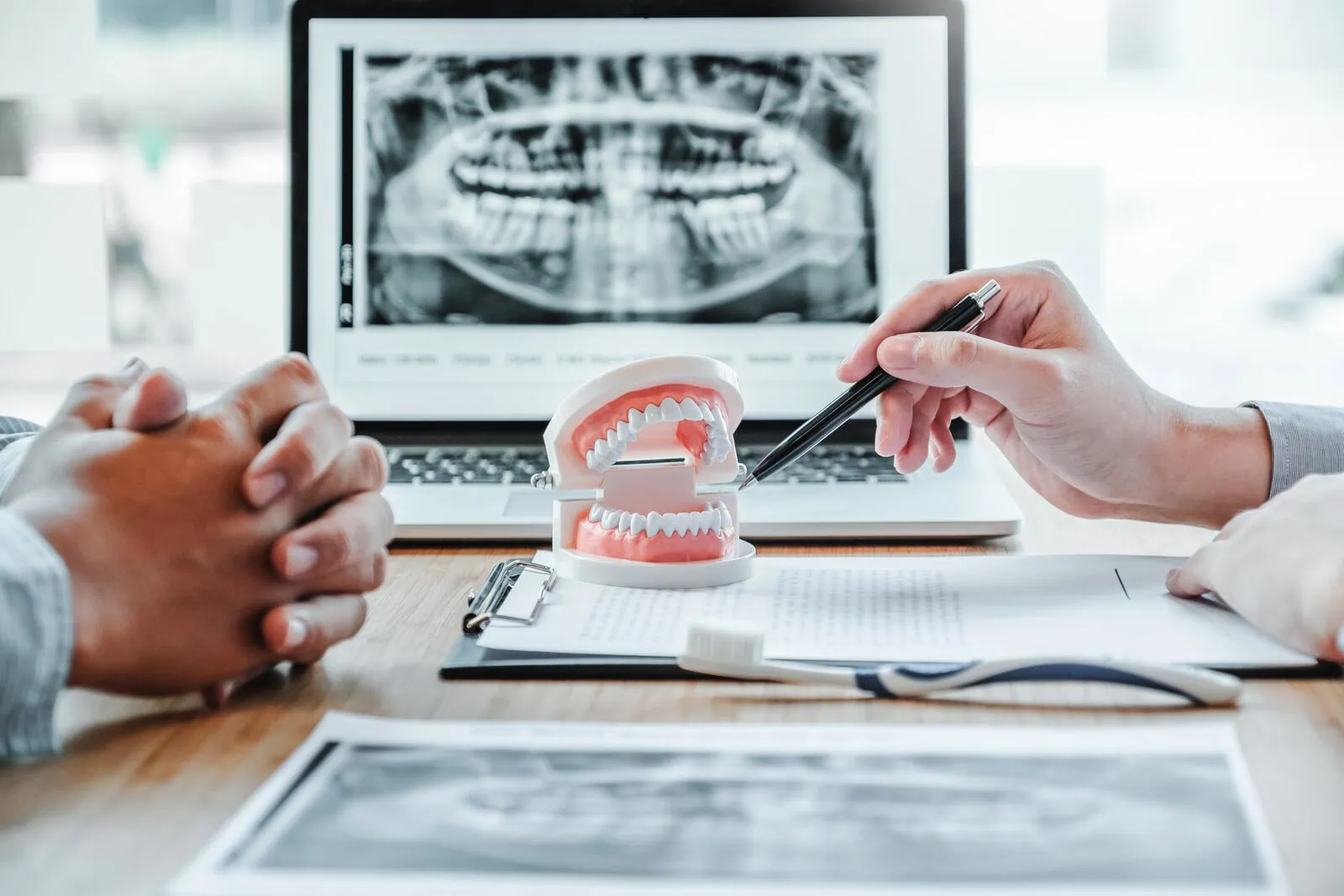Comprehensive Facial Trauma Care at Valley Oral Surgery in Livermore and Dublin, CA
Valley Oral Surgery provides expert management of facial trauma — from emergency treatment to long-term reconstruction.

What Is Facial Trauma?
Facial trauma, also called maxillofacial trauma, refers to injuries involving the bones, soft tissues, and structures of the face and jaw. These injuries can result from accidents, sports injuries, falls, or other sudden impacts — and often require specialized surgical care to restore function, symmetry, and appearance.
Facial trauma may include:
- Broken or displaced facial bones (cheek, nose, eye socket, jaw)
- Tooth fractures or dental avulsions (knocked-out teeth, sometimes treated with dental implants)
- Lacerations of the lips, cheeks, or gums
- Fractured jaw (mandible or maxilla)
- Soft tissue trauma with or without bone involvement
Treatment is often urgent, and proper evaluation by an oral and maxillofacial surgeon is essential for both immediate recovery and long-term function.
Why See an Oral and Maxillofacial Surgeon?
Facial trauma lies at the intersection of dentistry, surgery, and medical emergency care. Oral and maxillofacial surgeons like Anna Lu, DMD and Jimmy Tung Nguyen, DDS, MD are uniquely trained to:
- Diagnose and treat fractures of the jaw, cheekbone, and eye socket
- Repair soft tissue lacerations affecting nerves and salivary glands
- Manage dental trauma, including implant placement for lost teeth
- Coordinate care with emergency rooms and referring providers
- Restore facial symmetry and preserve airway or bite function
With additional medical training and board certification in oral surgery, our surgeons provide both acute trauma care and long-term reconstructive planning.
Common Types of Facial Injuries We Treat
Valley Oral Surgery regularly manages:
- Mandibular fractures: Lower jaw fractures that may affect eating, speaking, and airway alignment
- Maxillary or zygomatic fractures: Injuries to the upper jaw or cheekbone that may involve sinus or orbital structures
- Orbital floor fractures: Affecting the bones around the eye, which may result in vision or movement issues
- Dental trauma: Such as avulsed (knocked out), fractured, or displaced teeth requiring stabilization or dental implants
- Soft tissue lacerations: Including the tongue, lips, and face
- Nasal bone fractures: Managed in coordination with ENT or plastic surgery when necessary
In some cases, treatment includes nerve repositioning or bone grafting for reconstruction.
How Facial Trauma Is Diagnosed and Treated
- Emergency Assessment: We begin with a thorough evaluation, including a visual exam and 3D imaging using our in-office CS 9300 system.
- Treatment Planning: Depending on the injury, treatment may include fracture stabilization, soft tissue repair, dental restoration, or a combination of approaches.
- Surgical Repair: Minor injuries may be treated under local anesthesia, while more complex repairs may require general anesthesia or IV sedation. Our surgeons offer a full range of sedation options for patient comfort.
- Follow-Up and Monitoring: Post-surgical visits are essential to ensure proper healing, function, and cosmetic outcome.
For patients needing replacement of lost teeth, we may recommend delayed implant placement or implant-supported overdentures depending on the healing progress.
When to Seek Care for Facial Trauma
Prompt treatment of facial injuries is critical. You should contact a surgeon or emergency care provider if you experience:
- Visible facial swelling or deformity
- Trouble opening or closing your jaw
- Bleeding that won’t stop
- Missing or displaced teeth
- Double vision or facial numbness
- Deep lacerations to the mouth or face
We coordinate with local emergency departments and dental providers for timely evaluation and follow-up.
Recovery and Post-Trauma Care
Recovery varies depending on the type and severity of the injury. General recovery timelines include:
- Minor soft tissue injuries: Healing in 7 to 14 days
- Jaw or bone fractures: Initial stabilization for 2–6 weeks, with full healing over several months
- Tooth loss or damage: Temporary stabilization followed by future restoration, such as dental implants
We will provide clear post-surgical instructions and work with you to restore full function and aesthetics as healing progresses.
Facial Trauma Surgery in Livermore, Dublin & Surrounding Communities
With offices in Livermore and Dublin, Valley Oral Surgery provides trauma care and follow-up support for patients across the East Bay. We serve communities including Pleasanton, Castro Valley, Tracy, San Ramon, Hayward, Fremont, San Leandro, and surrounding Bay Area cities. Our team also partners with local ERs, urgent care centers, and general dentists to ensure patients receive timely and comprehensive facial trauma care.
FAQs: Facial Trauma Surgery
What is the most common facial fracture?
The most commonly fractured facial bone is the mandible (lower jaw), especially in vehicle accidents, falls, and sports injuries.
Do all facial fractures need surgery?
No. Some non-displaced or minor fractures can heal on their own with monitoring. Surgery is needed when function, appearance, or stability is affected.
Can knocked-out teeth be saved?
Sometimes, yes — if treated quickly. If not, the area may later be restored with a dental implant or bridge.
Will there be scarring after soft tissue repair?
Incisions are made with attention to cosmetic outcome, and stitches are placed precisely. In most cases, scarring is minimal and fades over time.
How soon should I seek help after a facial injury?
Immediately. Early evaluation improves the chance of full recovery, especially with jaw fractures or avulsed teeth.
Lorem ipsum dolor sit amet, consectetur adipiscing elit. Suspendisse varius enim in eros elementum tristique. Duis cursus, mi quis viverra ornare, eros dolor interdum nulla, ut commodo diam libero vitae erat. Aenean faucibus nibh et justo cursus id rutrum lorem imperdiet. Nunc ut sem vitae risus tristique posuere.

